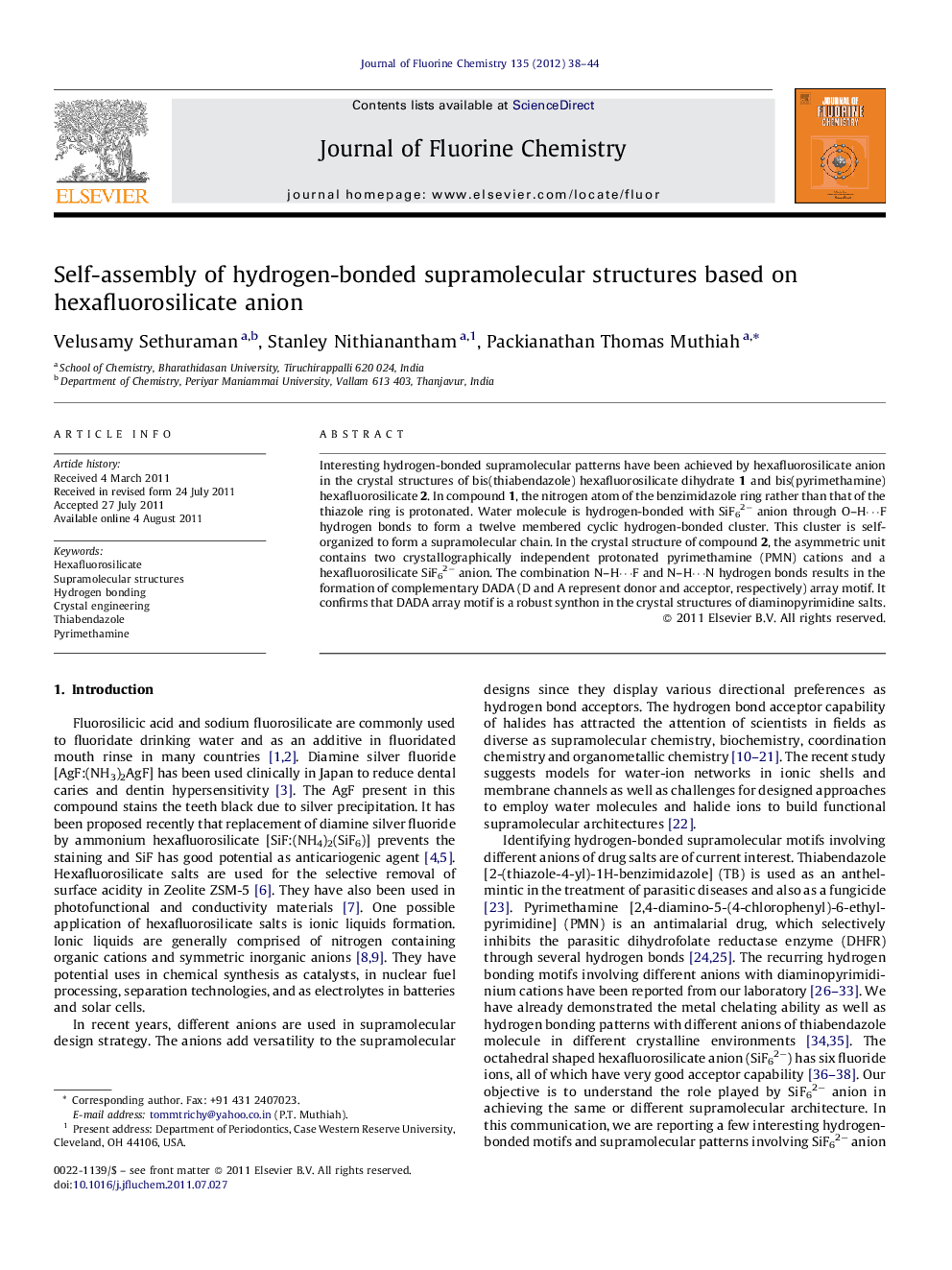| Article ID | Journal | Published Year | Pages | File Type |
|---|---|---|---|---|
| 1314708 | Journal of Fluorine Chemistry | 2012 | 7 Pages |
Interesting hydrogen-bonded supramolecular patterns have been achieved by hexafluorosilicate anion in the crystal structures of bis(thiabendazole) hexafluorosilicate dihydrate 1 and bis(pyrimethamine) hexafluorosilicate 2. In compound 1, the nitrogen atom of the benzimidazole ring rather than that of the thiazole ring is protonated. Water molecule is hydrogen-bonded with SiF62− anion through O–H⋯F hydrogen bonds to form a twelve membered cyclic hydrogen-bonded cluster. This cluster is self-organized to form a supramolecular chain. In the crystal structure of compound 2, the asymmetric unit contains two crystallographically independent protonated pyrimethamine (PMN) cations and a hexafluorosilicate SiF62− anion. The combination N–H⋯F and N–H⋯N hydrogen bonds results in the formation of complementary DADA (D and A represent donor and acceptor, respectively) array motif. It confirms that DADA array motif is a robust synthon in the crystal structures of diaminopyrimidine salts.
Graphical abstractInteresting hydrogen-bonded supramolecular patterns have been achieved by hexafluorosilicate anion in the crystal structures of bis(thiabendazole) hexafluorosilicate dihydrate 1 and bis(pyrimethamine) hexafluorosilicate 2.Figure optionsDownload full-size imageDownload as PowerPoint slideHighlights► Supramolecular structures based on hexafluorosilicate anion. ► Hydrogen-bonded motifs self-assembled into supramolecular architectures. ► The DADA array motif is a robust synthon. ► This result may be very useful for the design of novel functional materials.
